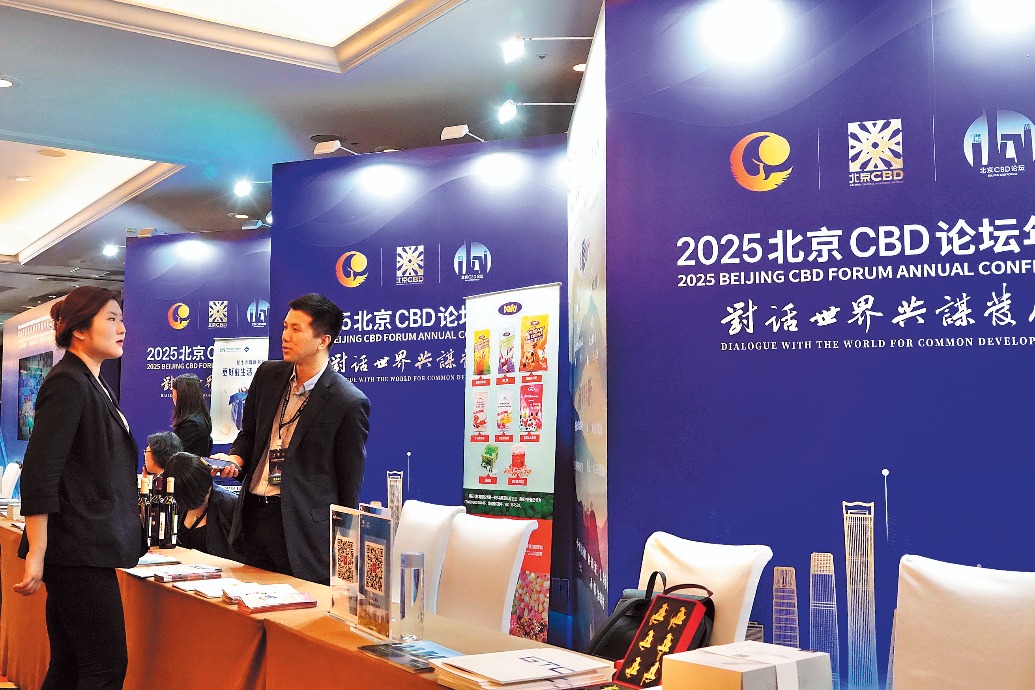Debt has been shifting from SOEs to SUVs

Consumer borrowing may be a good thing, but the speed at which it develops is something to watch carefully
Deleveraging is now a watchword in China, with the campaign to tackle the many different sources of excess leverage gathering pace, whether it is overspending local governments, inefficient State-owned enterprises, off-balance-sheet lending or aggressive small-to mid-sized banks. Given these multiple assaults, China's often-cited 167 percent corporate debt to GDP ratio could actually start to level off this year for the first time in history, barring periods of financial crisis.
This idea is usually met with widespread incredulity, given China's supposed addiction to debt to fuel growth. But the current attack on corporate debt does not reflect the full story. Instead of rising levels of corporate debt, China is replacing this economic rocket fuel with two other sources - fiscal debt (currently 38 percent of GDP) and, more important, consumer borrowing (45 percent).
The fact that China's consumers are taking on credit at a record pace is also generally met with incredulity both inside and outside China. Chinese and Western friends have all said that China is a nation of savers, very conservative, who don't like borrowing from banks. But this is no longer quite true.
The most obvious example is mortgage debt. Houses used to be bought mainly with cash, or with loans from friends and family, if necessary. Then, all of a sudden last year, Chinese house buyers started leveraging up on low-priced mortgages, with long-term household debt accounting for an unprecedented 60 percent of loans and 35 percent of total housing finance in the second half of 2016, and rising over 100 percent year-on-year.
While this has now been curbed (mortgage lending was back to a more normal 36 percent of total loans in the second quarter of this year), it does give a flavor of the potential speed and enthusiasm with which supposedly frugal Chinese households will take on debt. And there are more than enough credit providers waiting to open up this new, potentially lucrative, market.
China is, once again, not following conventional models. Instead of credit cards, which a Western consumer might use, the younger generation has moved straight to mobile payment. The combination of the ease, ubiquity and interconnectedness of the Alipay and Tenpay networks means that since 2015, they have been able to start credit scoring their customers, and- for those with sufficiently sound online behavior and financial transactions - provide short-term consumer loans. Swiping "yes" to a payday loan to buy a rice cooker seems so much easier than going to a bank.
While the scale of this is still relatively small, it adds to the 140 percent year-on-year increase in short-term household loans to 1.3 trillion yuan ($192.5 billion; 165.3 billion euros; £147.7 billion) over the last year, the 100 percent increase in new credit card loans to 2.4 trillion yuan, and the 70 percent increase in the peer-to-peer loan balance to 1.05 trillion yuan - all short-term, unsecured credit.
Moreover, there has been a similar acceleration in the use of auto financing. Again, these are not conventional loans provided by a bank but short-term periods of either interest-free credit or payment by installment that just make it that much easier to upgrade to the required level of SUV. Most of these are provided by dedicated auto finance companies, with auto dealers accounting for 28 percent of the total, with the amount now over 35 percent of total auto purchases (4 trillion yuan in 2016).
So, is this is a good or a bad thing? In many ways it is good. One of the complaints about China's economy previously was that all the credit went to the SOEs, who spent money on infrastructure, factories and other assets, benefiting the economy overall but not consumers directly. Suppressing household spending, in economic parlance.
Now consumers have more spending power, fueled by credit, which benefits many of the consumer goods sectors of the economy (household appliances and mobile phones), as well as services (technology, travel, leisure and entertainment). Economic rebalancing is achieved at both a national and, owing to the increase in domestic demand, an international level because of the different allocation of lending within the economy.
But there are obvious risks. The most prominent one is that consumer debt is, unlike SOE debt, not backed by the government in any shape or form. This means that when it defaults, there is no bailout. At the moment, the scale of short-term consumer debt is not large enough to threaten the economy, but at an estimated 15 percent of GDP, it is edging up toward US levels (19 percent).
The other risk is that, as often happens in China, new financial markets develop too far, too fast, and so could create a problem in a few years' time. South Korea in 2003, Taiwan in 2007 and Hong Kong in 2001 all experienced similar consumer credit bubbles, with South Korea the most badly affected owing to the unprecedented increase in credit card debt from 5 percent of GDP to almost 15 percent in the space of three years. The more conservative Taiwan and Hong Kong markets were able to handle their credit card busts better.
The new generation of Chinese consumers, flashing their latest Alipay purchase or partly paid SUV are therefore, arguably a positive. But not at breakneck speed.
The author is senior analyst with Haitong Securities (UK) Limited. The views do not necessarily reflect those of China Daily.
(China Daily European Weekly 07/28/2017 page9)
Today's Top News
- Xi to attend 2nd China-Central Asia Summit in Kazakhstan on June 16-18
- Xi extends condolences to King Charles III over plane crash in India
- Xi extends condolences to Indian leaders over plane crash
- Israel launches attack on Iran's nuclear sites
- Israel conducts preemptive strike on Iran
- The bumpy road of international trade






























